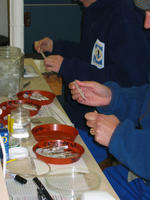
The green revolution in the 1960s increased our agricultural yields significantly with its hybridised crops and artificial fertilisers. But now, as the global population starts edging closer to the 9 to 10 billion mark by the middle of this century, we are going to need a lot more than that to keep the world’s people fed.
Since there is not that much more arable land out there that can be turned from natural bush, veld or forest into agriculturally productive farmland, there is a lot of talk about how we can further intensify our agricultural outputs – how to increase the yield per hectare of the land that is already under production.
But there are new – entirely new – places to grow food, and they are nowhere near the sods of earth that have been giving us our mealies, apples and beef for so long.
Welcome to the age of the new foods: laboratory-grown meat to ease the environmental burden associated with livestock farming; algae for bioethanol, so we do not have to keep diverting food crops from plate to petrol tank; and laboratory-designed crops (yes, genetically modified plants are not going to go away, no matter how Frankensteinian we find them).
By Leonie Joubert